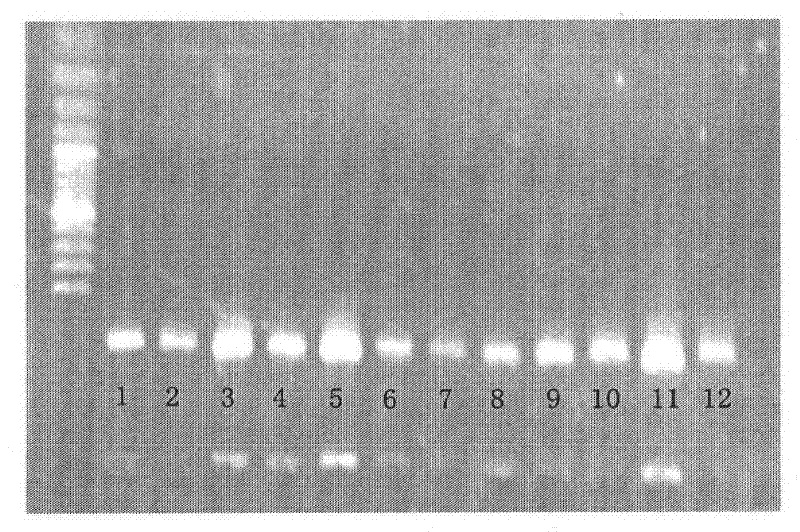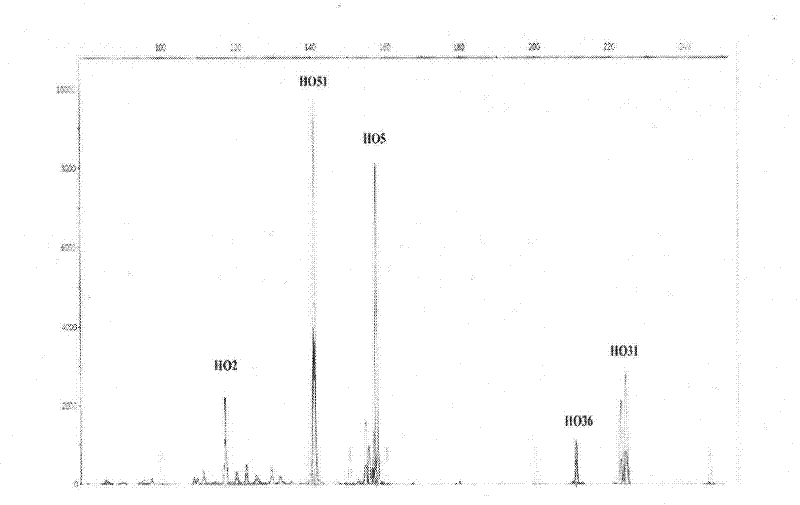Screening Method of Microsatellite Markers in Seagrass Saltophila
A technology of microsatellite marker and screening method, which is applied in the field of molecular biology DNA marker technology and application, and can solve problems such as the limitation of genetic research of Salina philoxeroides
- Summary
- Abstract
- Description
- Claims
- Application Information
AI Technical Summary
Problems solved by technology
Method used
Image
Examples
Embodiment Construction
[0015] The screening of microsatellite sites and the determination of polymorphic markers of the present invention will be described in detail below through examples. The halophaga used in the experiment came from the seagrass beds of Hainan and Guangxi.
[0016] 1. Screening Microsatellite Sequences
[0017] Genomic DNA was extracted from leaf tissues of 12 halophila samples using a modified CTAB method. The specific operation of the improved CTAB method is as follows: (1) 0.05 g of the dry sample, which is dried on silica gel and wiped clean with 75% ethanol, is pulverized in a pulverizer for 40 seconds; (2) 1 ml of pre-cooled elution buffer (containing 0.02 g (3) centrifuge at 12000 rpm at 4°C for 15 minutes; (4) Discard the supernatant and add 780 μl 2×CTAB to extract buffer (containing 2.8 μl / ml of β-mercaptoethanol), in a water bath at 65°C for 2 hours, and shake up and down every 15 minutes; (5) add an equal volume of chloroform-isoamyl alcohol (volume ratio 24:1), sh...
PUM
 Login to View More
Login to View More Abstract
Description
Claims
Application Information
 Login to View More
Login to View More - R&D
- Intellectual Property
- Life Sciences
- Materials
- Tech Scout
- Unparalleled Data Quality
- Higher Quality Content
- 60% Fewer Hallucinations
Browse by: Latest US Patents, China's latest patents, Technical Efficacy Thesaurus, Application Domain, Technology Topic, Popular Technical Reports.
© 2025 PatSnap. All rights reserved.Legal|Privacy policy|Modern Slavery Act Transparency Statement|Sitemap|About US| Contact US: help@patsnap.com



